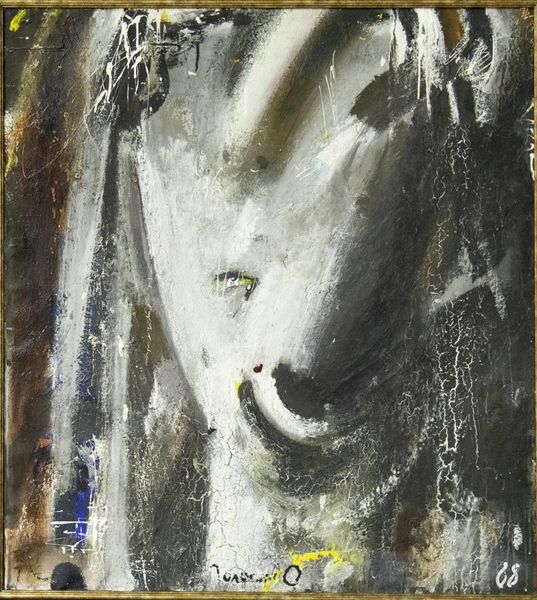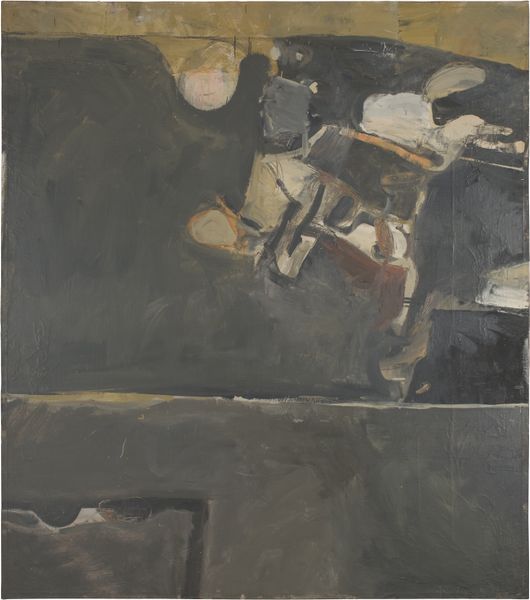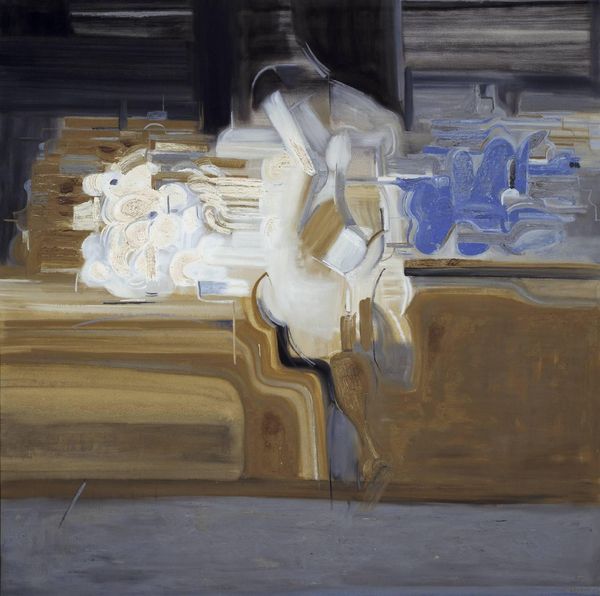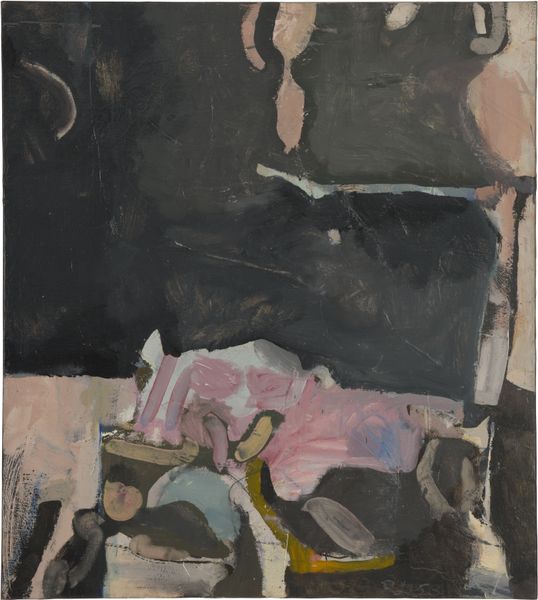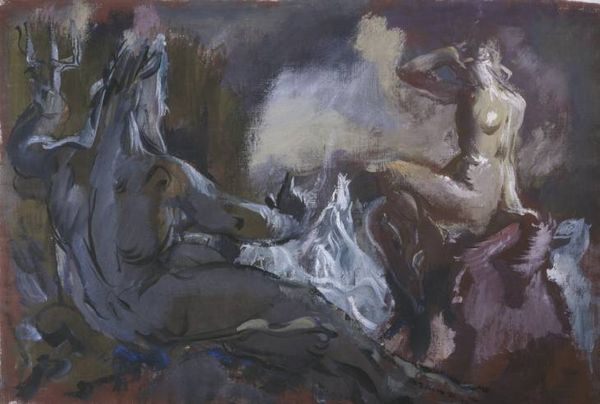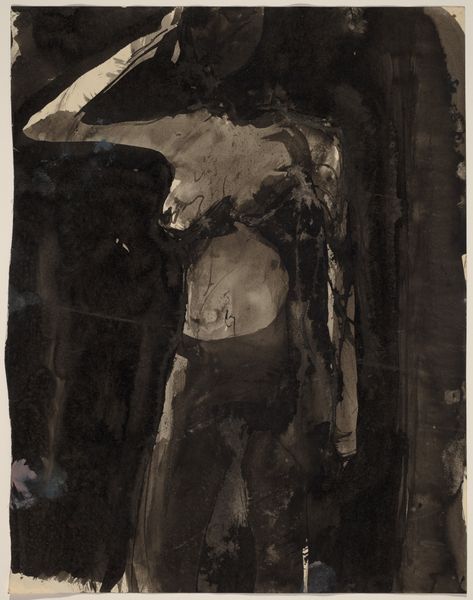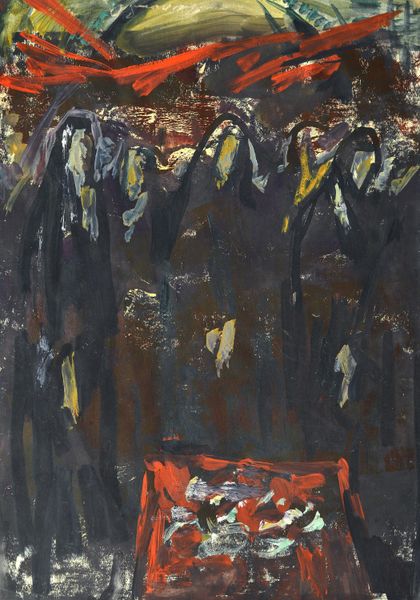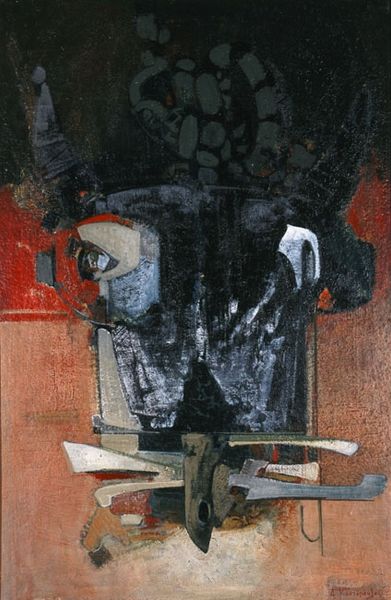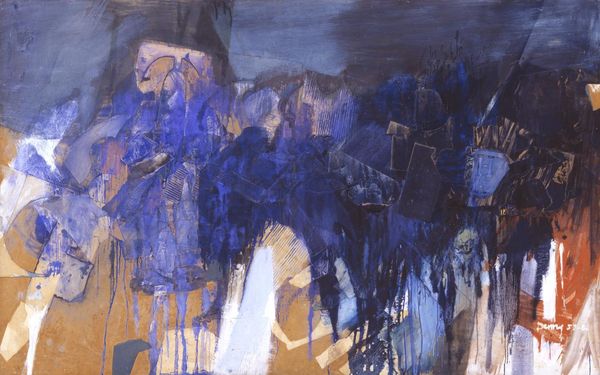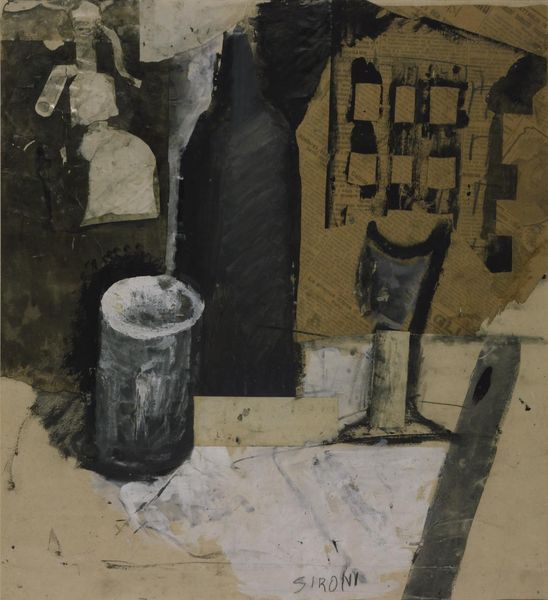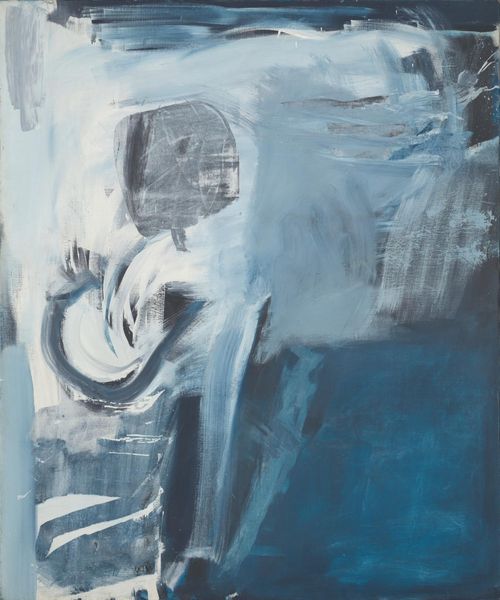
Copyright: Edwin Dickinson,Fair Use
Curator: Here, we have Edwin Dickinson’s 1937 painting, "Composition with Still Life." Notice Dickinson's use of oil paint. What's your initial reaction? Editor: I'm immediately drawn to the dreamlike quality. The stark contrasts of light and shadow and the somewhat obscured figures create an atmosphere of mystery, of almost unsettling beauty. Curator: Yes, the romantic sensibility is palpable. But let’s delve deeper into the composition. Observe how Dickinson juxtaposes classical forms – the nude figures and still life elements. What kind of symbolic associations emerge from that clash of traditional icons with the vagueness of the overall form? Editor: The broken pottery at the bottom for example… fragments suggest a lost whole. In that sense the shattered objects, combined with the obscured nude, trigger thoughts on lost or fragile innocence. Curator: Absolutely, the vulnerability you pick up on also evokes considerations around the figure and object in the construction of identity. It speaks to power dynamics inherent in viewership and gendered representation. Editor: And note how that vulnerability and erotic symbolism connects across different art-historical contexts, back to classical mythology, and even religious painting. The figure evokes the reclining Venus but in a fractured, contemporary language. The draped fabric even looks like the classic "drapery of salvation" and yet it also alludes to being just a rag or sheet. Curator: True, it underscores the evolving cultural meanings that have been assigned to similar imagery across time. Considering Dickinson's work emerged in the 1930s, during a period of great social upheaval, how can we understand these forms in relation to anxieties surrounding economic instability, gender and representation in the modern age? Editor: I appreciate your reminder that art always speaks to both timeless myths and particular historical anxieties. The fractured and obscured nature of the image seems almost like the artist trying to pick up fragments of both collective cultural history, and personal history to create meaning and form anew. Curator: That search for meaning resonates powerfully in this work, I think. Thanks for pointing to those elements. Editor: My pleasure, always something to discover in these haunting forms.
Comments
No comments
Be the first to comment and join the conversation on the ultimate creative platform.
